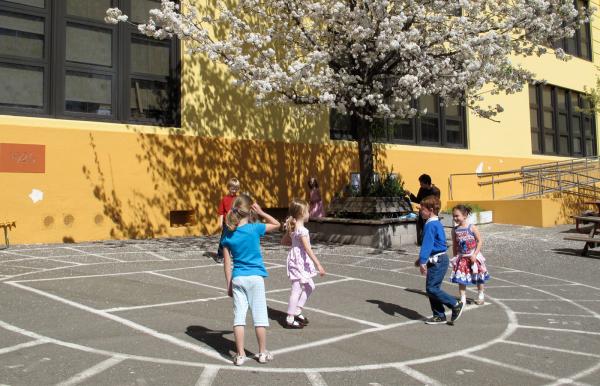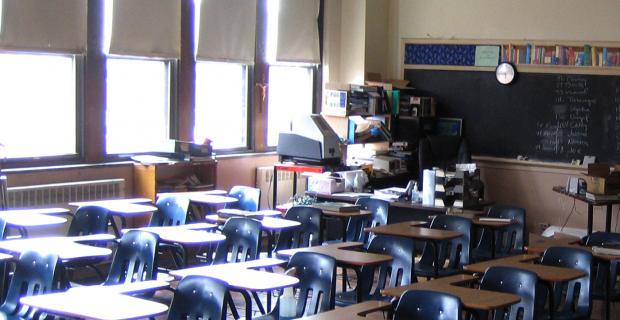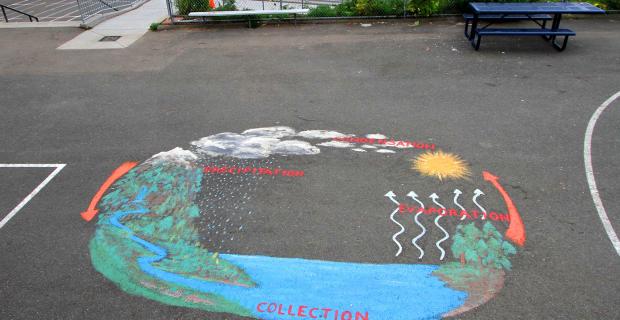Green School Design: Better for Health and Education...and More Cost-effective

Some 55 million students spend their days in schools that are too often unhealthy, restrict their ability to learn, require unsustainable amounts of resources to construct and maintain, and contribute substantially to environmental problems such as pollution and climate change.
A recent and rapidly growing trend is designing schools with the specific intent of providing healthy, comfortable, and productive learning environments. However, these green, high-performance schools generally cost more to build — a major obstacle at a time of limited school budgets and an expanding student population.
We were commissioned to conduct a study that asked how much more does green school design cost, and is greening schools cost-effective? Our conclusion: the data provide a clear and compelling case that greening schools today is extremely cost-effective, and represents a fiscally far better design choice. Building green schools is more fiscally prudent and lower risk than continuing to build unhealthy, inefficient schools.
The study, titled "Greening America's Schools: Costs and Benefits," was sponsored by the American Federation of Teachers, the American Institute of Architects, the American Lung Association, the Federation of American Scientists, and the US Green Building Council. It entailed a detailed analysis, using conservative and prudent financial assumptions, of 30 green schools built in 10 states between 2001 and 2006. Its complete text can be found at https://www.usgbc.org/resources/greening-america039s-schools-costs-and-benefits.
("Green school" designs are to a substantial extent based on the US Green Building Council's Leadership in Energy and Environmental Design — LEED — which is the national consensus green building standard. LEED rates projects according to their impact on their sites, materials used and how they are sourced, and the design, construction, and efficiency of a variety of systems including water, energy, air quality, lighting, acoustics, waste, and transportation. A rating system specifically designed for K–12 schools is currently being drafted, including a proposal for LEED credit for integrating sustainable facility features with the curriculum.)
A few highlights from the study:
- Green school construction costs less than 2 percent more than construction of conventional schools, about $3 per square foot.
- The direct and indirect financial savings to the school and the community are about $70 per square foot, 20 times as high as the cost of going green. Lower energy and water costs, improved teacher retention, and lower health costs directly save green schools about $12 per square foot, four times the additional cost of going green. Financial savings to the broader community are significantly larger, and include the reduced cost of public infrastructures, lower air and water pollution, and a better educated and compensated workforce.
- On average, green schools use 33 percent less energy than conventionally designed schools. Typical energy performance enhancements include more efficient lighting, greater use of daylighting and sensors, and more efficient heating and cooling systems. The total direct and indirect energy cost saving for a new green school compared with a conventional school is about $9 per square foot. The savings for a green upgrade of an existing school would be about $7 a square foot. If all new school construction and school renovations went green starting today, energy savings alone would total $20 billion over the next 10 years.
- As a rough estimate, a green school could realize the following annual emission reductions: 1,200 pounds of nitrogen oxides (NOx), a principal component of smog; 1,300 pounds of sulfur dioxide (SO2), a principal cause of acid rain; 585,000 pounds of carbon dioxide (C02), the principal greenhouse gas; and 150 pounds of coarse particulate matter (PM10), a principal cause of respiratory illness and an important contributor to smog.
- The 30 green schools evaluated achieved an average water use reduction of 32 percent. This reduction has direct savings for the building as well as substantial societal benefits from lower pollution and reduced infrastructure costs to deliver water and to transport and treat wastewater. For example, in Dedham, MA the school design team provided rainwater storage capacity on-site, saving the town the cost of enlarging an off-site stormwater detention facility. The city valued this improvement at $400,000.
- Highly reflective roofs commonly last longer than conventional roofs. Green roofs (with plants in soil on an impermeable membrane) are expected to last 30 to 50 years or longer. Lowered ambient air temperature cuts smog formation, improves comfort and health, and cuts the cost of air conditioning.
- About 25 percent of the solid waste discarded in the US is construction and demolition (C&D) waste. C&D diversion rates are typically at least 50–75 percent in green buildings and have reached as high as 99 percent on some projects.
- Conventional schools are typically designed just to meet building codes. Design of schools to meet minimum code performance tends to minimize initial capital costs but delivers schools that are not designed specifically to provide comfortable, productive, and healthy work environments for students and faculty. Few states regulate indoor air quality in schools or provide for minimum ventilation standards. Not surprisingly, a large number of studies have found that schools across the country are unhealthy — increasing illness and absenteeism and bringing down test scores.
- The American Lung Association has found that American school children miss more than 14 million school days a year because of asthma exacerbated by poor indoor air quality. It costs nearly three times more to provide health care for a child with asthma than a child without asthma. In 2006 dollars this amount equals $1,650 per child — costs borne not by the schools but by the students and their families. A recent Carnegie Mellon review of five separate studies found an average reduction of 38.5 percent in asthma in buildings with improved air quality.
- Lower-income and minority children disproportionately suffer from poor indoor air quality and related problems in conventional schools. Children in low-income families are 30 percent to 50 percent more likely to have respiratory problems that lead to increased absenteeism and diminished learning and test scores. Greening public schools creates an opportunity to improve the health and educational settings for all students, regardless of income or background, a process with clear moral benefits. The financial benefits of a more equitable educational system are difficult to calculate, but could be substantial in terms of increased diversity in the work force, community development, increased productivity, etc.
- Based on actual improvements in design in green schools and on very substantial data on productivity and test performance, a 3–5 percent improvement in learning ability and test scores in green schools appears reasonable and conservative. It makes sense that a school specifically designed to be healthy, and characterized by more daylighting, less toxic materials, improved ventilation and acoustics, better light quality, and improved air quality would provide a better study and learning environment.
- High performance schools provide educational opportunities that conventional schools do not. For example, on-site renewable energy generation, water conservation features, and other green technologies create very valuable opportunities for hands-on learning.
Such benefits of greening schools as reduced teacher sick days, lower operations and maintenance costs, improved electricity quality and reliability, reduced insurance and risk-related costs, and improved educational quality are not quantified in this study. These additional benefits, if calculated, would greatly increase the recognized financial benefits of greening schools and further strengthen the case that building conventional and relatively inefficient and unhealthy school buildings today is financially imprudent and even morally and educationally irresponsible.




